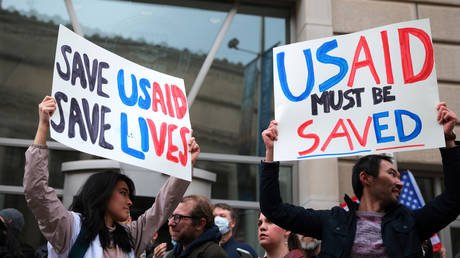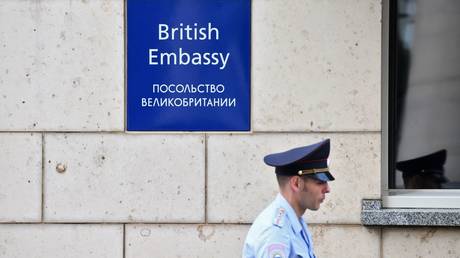President Donald Trump added tariffs to imports from China earlier this week.
Mike Segar/Reuters
President Donald Trump‘s tariffs could go well beyond Canada, China, and Mexico this time.Countries like Vietnam, where companies shifted production since the last trade war, could be next.”More surgical tariffs” could be on the way, one expert who advises companies said.
President Donald Trump could target a wider range of countries with tariffs than during his first term, including some that have attracted companies already trying to minimize their exposure to possible levies.
This time, places like Vietnam and South Korea could face tariffs under a section of the “America First Trade Policy,” which says that Trump’s White House will consider tariffs as a remedy for “unfair and unbalanced trade.”
The Trump administration could use that to target a longer list of countries than seven years ago, Chris Desmond, principal, customs and international trade at PwC, said.
The result could be “more surgical tariffs, ones that are focused on specific countries versus a sweep across the board,” Desmond said.
Trump’s focus on trade deficits leaves room to aim at Vietnam
In 2018, the first Trump administration slapped levies on various goods from Canada, China, and Mexico.
This week, the White House has again targeted America’s biggest trading partners. A 10% extra tariff on imports from China took effect on Tuesday. Trump imposed 25% levies on goods from Canada and Mexico, then delayed them by a month.
Experts advising companies on navigating such issues say they’re bracing for Trump to target more countries than he did seven years ago.
Vietnam is one nation that Trump could target if he cracks down on more countries with trade deficits with the US, Desmond said. It had the third-largest trade deficit with the US during the 12 months to October 2024.
The Southeast Asian nation’s deficit was nearly three times as large as Canada’s, according to PwC data.
“A lot of companies have moved the manufacturing to Vietnam to avoid the China tariffs,” Desmond said. That, he added, has contributed to Vietnam’s growing trade imbalance with the US.
After November’s election, companies including Steve Madden and Traeger Grills pointed to it as one of several countries where they have ramped up production in recent years to minimize the costs of said potential levies.
Trump’s nominee for US trade representative, Jamieson Greer, said at a confirmation hearing Thursday that the Trump administration would study implementing tariffs on countries that have trade deficits with the US at his confirmation hearing on Thursday. He referred to Vietnam, among other nations.
Other countries potentially in the crosshairs include South Korea, a supplier of appliances and electronics to the US, and India, which exports clothing, Desmond said.
Rebecca Homkes, a lecturer at the London Business School who advises CEOs on retail and manufacturing strategy, said that some coms that she works with started considering ways of protecting themselves from potential new tariffs even before the election. That included broadening their base of suppliers to new countries.
Still, Desmond, who is advising companies on how to handle the tariffs, said that many of his clients aren’t looking for alternatives to Vietnam just yet. Securing new suppliers can take years, he said.
Some are waiting to see if they can apply for exemptions to any levies — something that the previous Trump administration allowed and which spared some imports, such as toys, from the duties. The White House did not respond to a request for comment on a potential exemption process.
For now, Desmond said, many companies are looking at short-term moves to offset potential tariffs, such as bringing products into the US earlier. “I believe that exclusions are not going to be as numerous as they were before,” he said.
Another option that a few companies are considering is moving more manufacturing plants to the US and hiring workers there, LBS’s Homkes said. On Inauguration Day, Trump said he hoped tariffs would encourage companies to bring more manufacturing back.
But “cost-wise, it does not make sense, even with subsidies,” Homkes said. Exceptions include plants where much of the work is done by automation, she added.
“Let’s not kid ourselves that bringing manufacturing back to the US going to create jobs,” Homkes said.
Is your company being affected by potential tariffs? Reach out to this reporter at abitter@businessinsider.com





+ There are no comments
Add yours